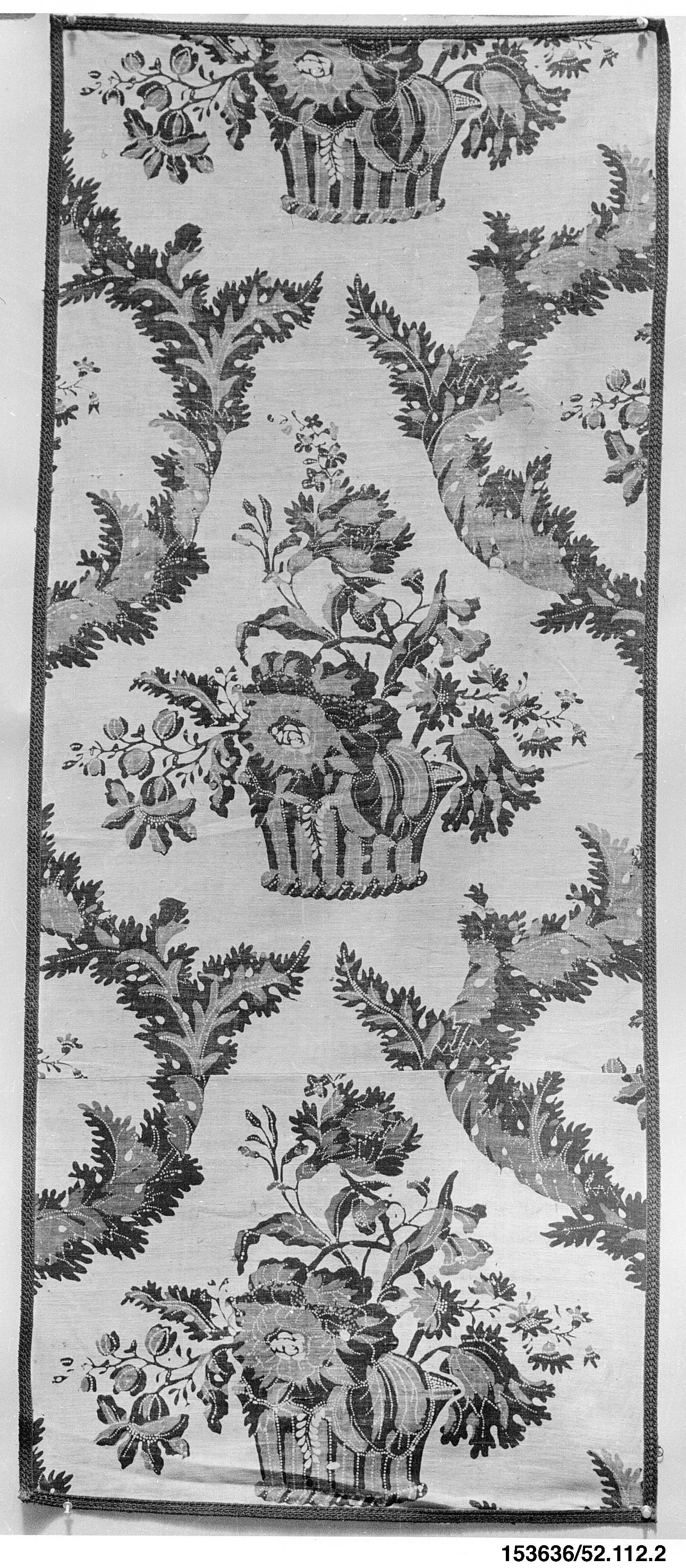Panel, blue-resist textile
Indian textile for American market
Not on view
Blue-resist textiles are characterized by naturalistic designs in dark and light shades of indigo blue on a loosely woven white cotton ground. These designs were made by dipping the cloth in an indigo bath, rather than trying to print indigo directly onto the cloth. The repeating figures on blue-resist fabric were made by first covering areas of the white ground with wax that was sometimes mixed with other ingredients such as clay, starch and minerals that blocked (resisted) the penetration of the indigo dye. The largest areas of white were probably reserved by painting the wax freehand onto the white fabric, which had been lightly marked with the pattern that was to remain clear of the wax and therefore be dyed blue. The marking of the pattern could have been done with a wooden printing block or with a stencil. The first bath would dye the entire unwaxed pattern a light blue. The dyer then waxed over some of the light blue areas of the design and drew in wax the fine lines that defined certain details, called "pencil work" in the period. After penciling with wax was completed, the entire piece went into the indigo bath a second time, which turned all the still uncovered areas the deeper shade of blue.
Determining the country of origin of this blue-resist fabric frustrated several generations of American textile historians. It is found in abundance in museums with major American textile collections, most often acquired between the 1920s and 1960s. It entered those collections as examples of rare, early American-made fabric. The pieces were often accompanied by family histories that attested to original ownership in New York’s Hudson River valley or Long Island, or sometimes coastal Connecticut. Interestingly, many of these histories trace the popularity of this type of fabric to eighteenth-century families who had emigrated from Netherlands.
However, after years of study most scholars concluded that since there was little documentary evidence of mid-eighteenth-century American textile production, and because there was one extant piece with a British excise tax stamp, these textiles had to have been made in England and exported to the American colonies. But there remained a problem with this supposition, as no blue resist fabric has been found in England. Instead, after recent research, it seems most likely that these textiles were exported by the English East India Company from India to the colonies. Several sources of evidence lead to this conclusion. Resist-dyeing with indigo was common in India at least as early as the thirteenth century, and the all-cotton white base fabric is certainly Indian—the English did not perfect weaving pure cottons until the 1770s. American merchant’s orders exist requesting this type of fabric from their East India Company suppliers. And at the time these fabrics were produced, there was a ban on importing Indian printed fabrics into England where they were perceived as in competition with English printed goods, but that ban did not hold for the North American colonies. It is possible that these decorative, yet simply printed furnishing textiles would not have appealed to the more refined European market. However, as bed hangings, quilts, and curtains, they brightened up the homes of many American colonists.
Due to rights restrictions, this image cannot be enlarged, viewed at full screen, or downloaded.
This artwork is meant to be viewed from right to left. Scroll left to view more.




